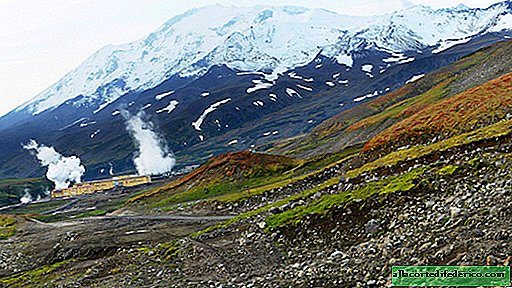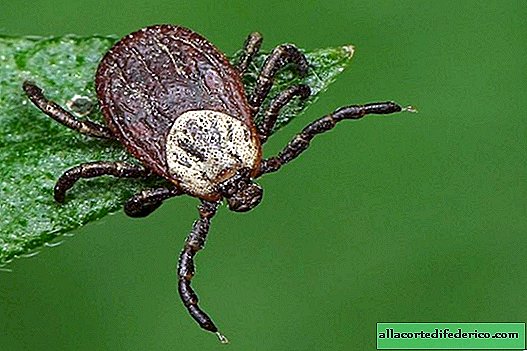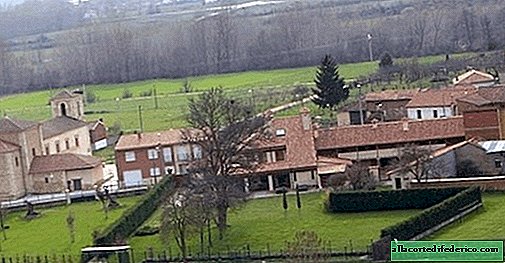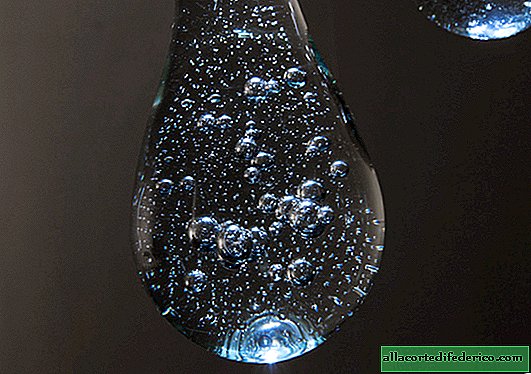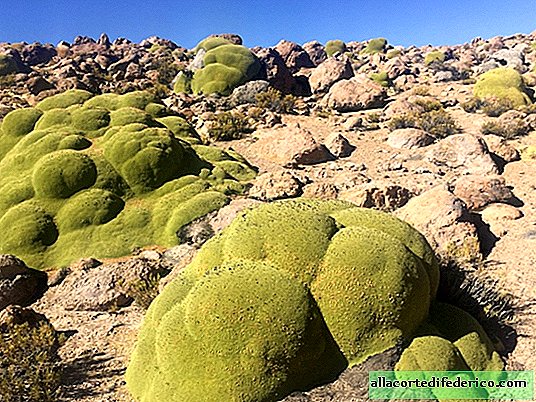How to make alcohol
Remember the joke how Vasily Ivanovich asked Petka to hide the alcohol tank from the soldiers, and he painted over the inscription “ALCOHOL”, writing “C2H5OH” instead? And the soldiers in the morning were in the insole. How - written IT. It turned out, indeed, he!
Surprisingly, there are practically no detailed reports on the network about how IT is made - the main raw material for vodka.
How to make vodka itself is complete. From sivuhi to elite brands. But alcohol - no!
I’ll have to fill this gap, since last week I visited the Usadsky distillery near Kazan, which is part of the Tatspirtprom concern.
Here they make alcohol of the highest category "Alpha", which gradually displaces the once-top "Lux" from the production of high-quality brands of vodka. All the same ancient method, invented before our era, implemented on an industrial scale in the XIV century and widely practiced in sheds and garages during perestroika. Good old distillation ...
At the inlet there is grain from the bag, at the outlet there is a pure 96-degree liquid ...
As you know, the amusing effect of alcoholic beverages and the methods of their preparation have been known to mankind since biblical times: remember, Noah accidentally drank fermented fruit juice and got drunk. In general, scientists suggest that the idea of chemical distillation of liquids arose as early as the 1st millennium BC. For the first time, the distillation process was described by Aristotle (384-320 BC). Many alchemists of that time were engaged in improving the technology of distillation, believing that by distillation they were able to isolate the soul of wine. Thanks to this, the distillation product was called the "spirit of wine" (from the Latin "spiritus vini").
The process of obtaining alcohol was opened in various regions of the globe almost simultaneously. In 1334, an alchemist physician from Provence Arnaud de Willger (France) first received wine alcohol from grape wine, considering it to be a healing agent. In the middle of the XIV century, some French and Italian monasteries produced wine alcohol under the name "Aquavitae" - "water of life", and in 1386, thanks to Genoese merchants, alcohol reached Moscow.
Ethanol production was started in Europe after the invention of a distillation apparatus in Italy in the 11th century. For several centuries, ethyl alcohol was hardly used in its pure form, except in the laboratories of alchemists. But in 1525, the famous Paracelsus noted that the ether obtained by heating alcohol with sulfuric acid has a hypnotic effect. He described his experience with poultry. And on October 17, 1846, the surgeon Warren euthanized the first patient with ether.
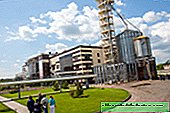
Gradually, alcohol was divided into food and technical, obtained by splitting wood waste. In England, industrial alcohol was exempted from increased sales taxes, since the market value of alcoholic beverages paid off state fees, but doctors and industrialists could not afford such a price. To prevent the ingestion of toxic industrial alcohol, it was mixed with methanol and other unpleasant odors.
Subsequently, alcohol gained instant distribution in medicine in connection with the constant wars. In 1913, about 2,400 factories were produced on the territory of the Russian Empire, producing mainly vodka and wine. Later there was a separation of the production of alcohol and vodka.
With the outbreak of the First World War, the production of vodka virtually ceased, the production of alcohol also decreased. Production began to recover only in 1925-1926, and the grand restoration of the alcohol industry was not begun until 1947, and new scientific and technological technologies and achievements were intensively applied. In 1965, 428 factories operated in the USSR with an annual production of 127.8 million decalitres of alcohol, and by 1975 the production of alcohol increased to 188.1 million decaliters. In subsequent years, this production was gradually reduced due to the increasing production of drinks with a lower strength.
Depending on the raw materials, alcohol can be food and technical.
Food is produced only from food raw materials. The most common and economical raw material for producing alcohol is potatoes. Potato starch is easy to digest, gelatinized and saccharified. In addition to potatoes, grain is used for the production of alcohol - wheat, rye, barley, oats, corn, millet, as well as sugar beets, molasses or molasses.
Technical alcohol is obtained from wood or petroleum products subjected to acid hydrolysis.
Now about the categories of alcohol and why “Alpha” displaces “Lux”. The thing is that alcohol "Alpha" must be produced from wheat, rye or from a mixture of them, that is, exclusively from grain raw materials, unlike other alcohols, which can also be produced from a mixture of grain and potatoes.
The second important difference between Alpha and Lux is the low content of toxic methyl alcohol: its content is only 0.003% in terms of anhydrous alcohol, while for Lux it is 0.02%. This is essential!
At the Usladsky distillery, alcohol is produced exclusively from wheat and only in one category - Alpha.
Wheat is brought in special grain carriers and placed in high elevator barrels, from where it then goes to production.

Grain for the production of alcohol should be of good quality and humidity not more than 17%, otherwise there is a high risk of charm, which will affect the quality of the final product.
With the help of a huge and powerful turbine pump, the grain is “pumped” through high columns to primary processing from storage tanks.
Pump for "pumping" grain from storage to cleaning:

The first task is to cleanse the grain of all impurities, both solid and ordinary litter, husks, etc.
So at the very beginning it falls on the separator.
First, the wheat is sieved through a sieve, on which all large objects remain.

This rubble accumulated near the separator in just half a day!

Further cleaning of husks and various debris. It is produced using a powerful air stream that separates heavy grain and light garbage.

Here is what remains after the grain has "gone" through the pipes further to crushing:

The crusher turns grain into coarse flour. This is necessary for the further digestion of grain and the release of starch from it.
The digestion of grain occurs in order to destroy its cell walls. As a result, starch is released and passes into a soluble form. In this state, it is much easier saccharified by enzymes. The grain is steamed at an excess pressure of 500 kPa. When the boiled mass leaves the brewing apparatus, the reduced pressure leads to the formation of steam (from the water contained in the cells).
A similar increase in volume breaks the cell walls and turns the grain into a homogeneous mass. The cooking temperature is 172 ° C, and the cooking time is about 4 minutes.

All processes occurring at the distillery are monitored by operators in the equipment room. Here they see completely everything that happens in each area, since the process of alcohol production is continuous and is carried out 24/7.

The crushed grain is mixed with water in a proportion of 3 liters per 1 kg of grain. The grain batch is heated by steam (75 ° C) and pumped into the contact hole of the unit. It is here that instant gruel is heated to a temperature of 100 ° C. After that, the heated batch is placed in the cooking apparatus.
During the saccharification process, malt milk is added to the cooled mass to break down the starch. Active chemical interaction leads to the fact that the product becomes absolutely suitable for the further fermentation process. The result is a wort that contains 18% dry sugar.
When an iodine test is made from the mass, the color of the wort should remain unchanged.

Fermentation of wort begins when introduced into the saccharified mass of industrial yeast. Maltose is broken down to glucose, which in turn is fermented into alcohol and carbon dioxide. Secondary fermentation products (essential acids, etc.) also begin to form.
The fermentation process takes place in huge closed fermentation plants, which prevent the loss of alcohol and the release of carbon dioxide in the production hall.
The installations are so large that the upper and lower parts are on different floors!

This is what the mash looks like in the installation. Peeking should be very careful so as not to inhale the vapors of carbon dioxide.

Carbon dioxide and alcohol vapors released during fermentation from the fermentation unit enter special compartments, where water-alcohol liquid and carbon dioxide are separated. The ethyl alcohol content in the mash should be up to 9.5 vol.%.
By the way, at the factory we were offered to try mash.

Everywhere in the shops you can see these fountains. They are designed to flush the eyes in case of contact with hazardous products, which are missing here.

Then proceed to distill the alcohol from the mash and its distillation. Alcohol begins to stand out from the mash as a result of boiling at different temperatures. The distillation mechanism itself is based on the following regularity: alcohol and water have different boiling points (water - 100 degrees, alcohol - 78 ° C). The released steam begins to condense and collect in a separate container. Purification of alcohol from impurities is carried out in a distillation unit.
Above us is a floor with distillation plants. Here, underneath, there is a whole network of pipelines - some for alcohol, some for water, some for steam, some for by-products.

And it’s hot in the distillation room !!!
The crude alcohol (raw alcohol) obtained at the main stage of production cannot be used for food purposes, as it contains many harmful impurities (fusel oils, methyl alcohol, esters). Many impurities are poisonous and give the alcohol an unpleasant odor, which is why crude alcohol is subjected to purification - rectification.
This process is based on different boiling points of ethyl, methyl and higher alcohols, esters. In this case, all impurities are conventionally divided into head, tail and intermediate.
Head impurities have a lower boiling point than ethyl alcohol. These include acetic aldehyde and individual esters (ethyl acetate, ethyl formate, etc.) formed during distillation.

Tailings are characterized by a higher boiling point compared to ethanol. They mainly consist of fusel oils and methyl alcohol.
The most difficult fraction is intermediate impurities (isobutyric acid ethyl ester and other esters).

When raw alcohol is purified by distillation apparatus, harmful impurities are separated and the alcohol concentration in the finished product increases (from 88% in raw alcohol to 96-96.5% in rectified).
Ready alcohol with a strength of 96% is pumped into storage tanks.

You should look into these containers even more carefully than in the container with a disinfectant. Here you can get drunk in an instant ...

Ready alcohol is sent for control measurements and, if everything is in order, it is assigned the category "Alpha", and then it will go to the production of vodka or other purposes ...




